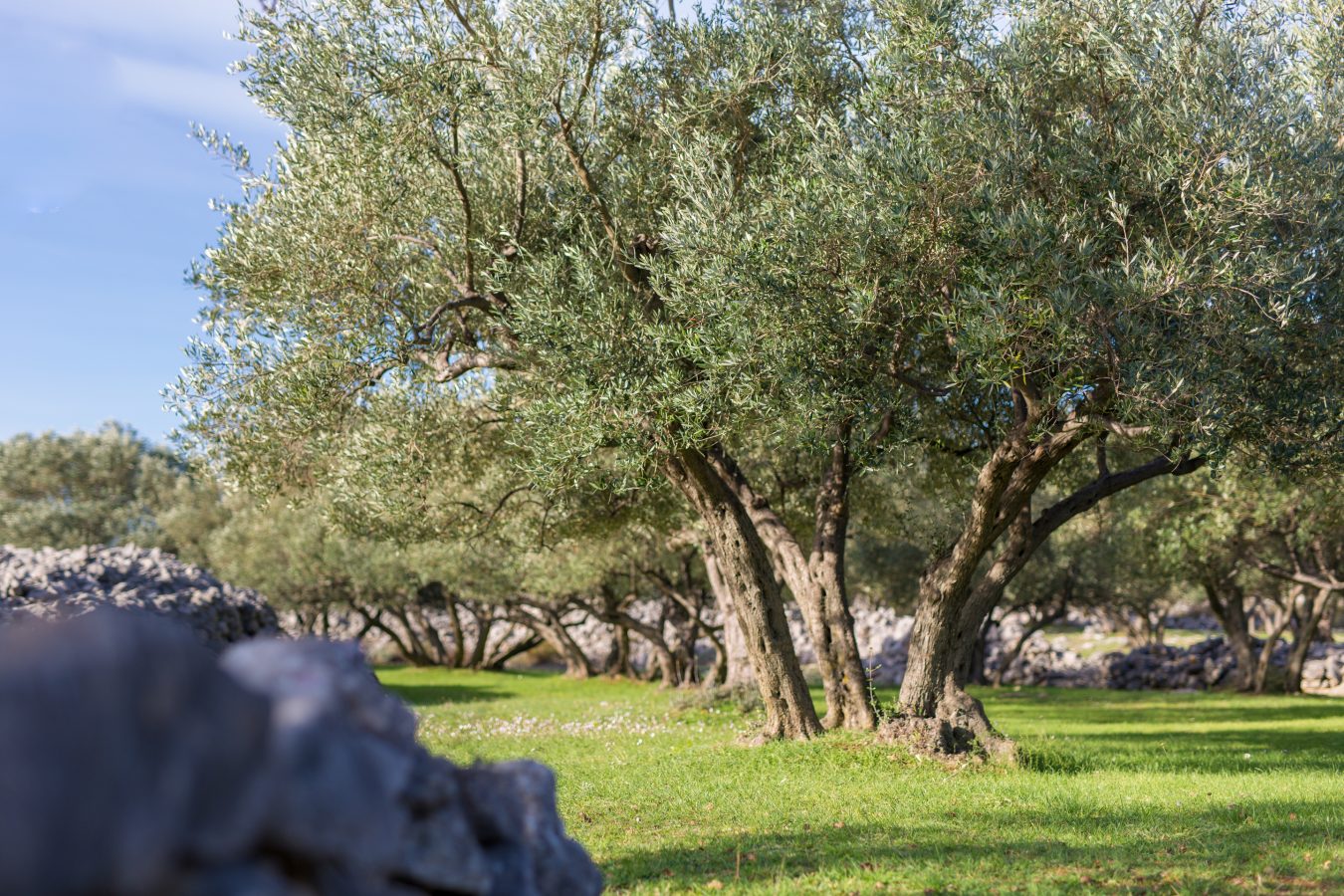The island of Krk, often called the “Golden Island,” prides itself on a long tradition of olive cultivation and authentic olive oils. Every autumn, the landscape transforms – olive groves take on golden-green hues, and locals and visitors come together in one of the most beautiful seasonal rituals: the olive harvest on Krk. In this blog, discover when and how olives are harvested, how the fruits are stored, how the oil is produced, its characteristics, and the best way to store it. Additionally, learn how tourists can take part in this enchanting experience and enjoy a truly traditional stay on the island.
Autumn on Krk and the Rhythm of the Olive Harvest
Autumn on Krk brings a special energy. The scent of the sea mixes with the aroma of ripe olives, and the olive groves become a stage for community and tradition. The olive harvest usually begins in early October and lasts until the end of November, depending on the variety and weather conditions. Each grower carefully monitors the fruit – its color, ripeness, and oil content – to determine the perfect time for picking.
How the Harvest is Done and What Makes it Special
The olive harvest on Krk is distinctive because most growers still pick olives by hand. Although, some of them sometimes use mechanical shakers. It is crucial to ensure the fruits remain undamaged, as bruised or broken olives spoil quickly and produce lower-quality oil. Nets are spread beneath the trees, the harvesters gently shake the branches, and the olives are collected in ventilated baskets that allow the fruit to “breathe.”
The goal is for the olives to reach the mill as quickly as possible – ideally within one day – to preserve freshness and prevent oxidation. Then, once at the mill, the olives undergo crushing, mixing, and cold centrifugation, which separates the oil without losing nutritional value or natural aroma.
Krk’s Signature Olive Oil
The result of the olive harvest on Krk is golden-green oil, with a fruity aroma and a slightly pungent taste, with hints of grass and almonds. Furthermore, Krk olive oil proudly carries the Protected Designation of Origin (PDO). This means the entire process, from tree to bottle, takes place here on the island.
Local varieties such as Drobnica, Debela and Plominka produce oil rich in polyphenols and distinctive character. Each drop tells the story of Krk’s soil, sun, and stone.
How to Store Olive Oil
Olive oil is alive – it thrives in darkness, calm, and moderate temperatures. It is best to store it in dark glass bottles at temperatures between 15–18 °C, away from heat and light. Under these conditions, it retains its freshness and aroma. Also, it is the most flavorful within the first year after pressing.
A Visitor’s Experience – Olive Touch
For those who want to truly experience the olive harvest on Krk, the Olive Touch program in Malinska offers a unique opportunity. Every Saturday in October, visitors can participate in olive picking, visit the historic mill – Bogovski toš – and taste fresh olive oil and local products.
The excursion lasts from 10 AM to 2 PM and includes a ride on a tourist train, a guided story about olive cultivation, and a visit to the DUBoak Interpretation Center. After the harvest, participants can enjoy tasting – a moment when all the effort transforms into fragrant drops of liquid gold.
To make the experience complete, we recommend staying in one of our luxurious villas during your visit. There you can enjoy privacy, tranquility, and an authentic Krk ambiance – the perfect combination of relaxation and local tradition.
Conclusion
The olive harvest on Krk is more than work – it is part of the island’s identity and an opportunity to connect with nature, people, and flavors that last all year round. If you are visiting Krk in the autumn, reserve your place in an olive grove. Perhaps your hand will pick the fruit that will become the next bottle of Krk’s renowned olive oil!
